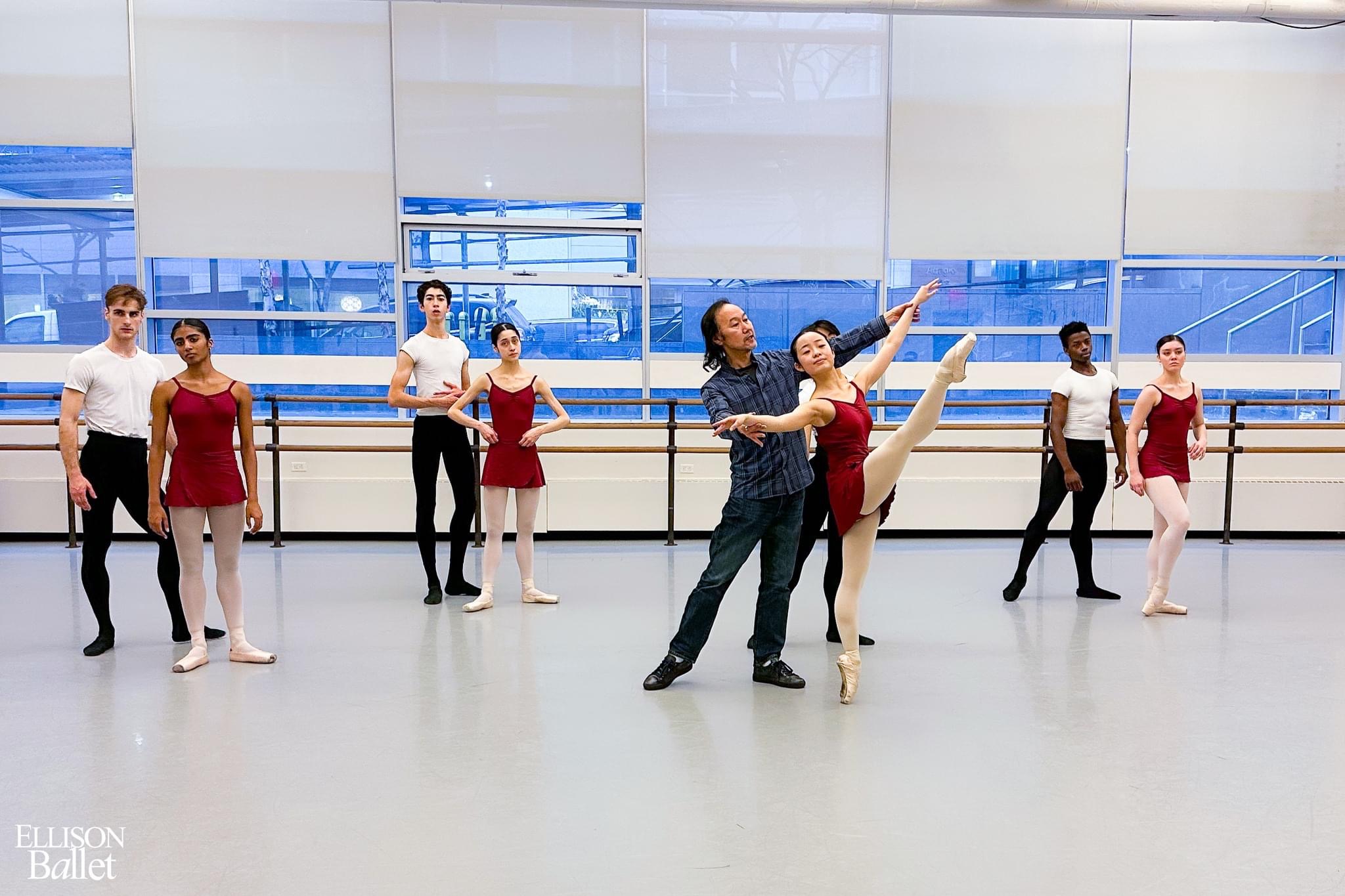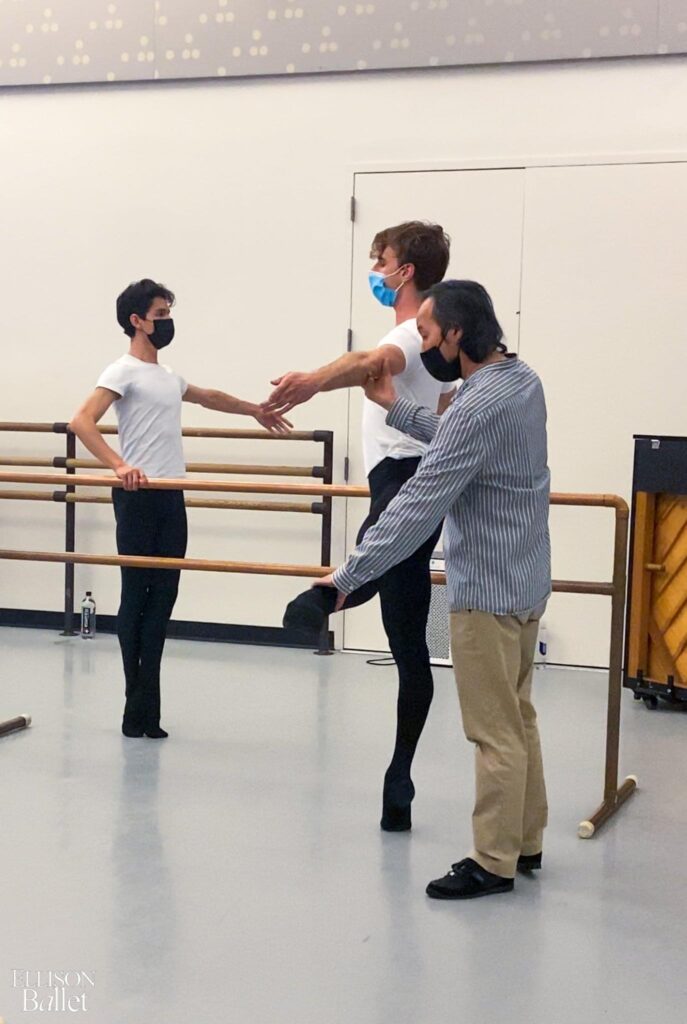
Ellison Ballet faculty member Bat Udval has a methodical approach to teaching partnering class. He moves slowly, introducing new steps one at a time as if they are the bricks of a house; refusing to add more until the students are stronger and the foundation is ready. He does all of this in an effort to prevent injuries, so he can one day send his dancers into the professional world with proper coordination and confidence.
Udval began dancing at 11-years-old at Perm Ballet College in Perm, Russia. After eight years there he graduated and joined the Russian State Ballet in Moscow, where he stayed for another 10 years. While performing, he also trained as a teacher at the Russian University of the Arts. In 1999 he moved to the United States, where he was a principal with the now-closed Cleveland San Jose Ballet. In 2001, after just one year with the company, he began guesting with companies and teaching at schools across both Russia and the United States. When he retired from performing in 2008, his teaching career took off: He joined the team at the Baltimore School for The Arts in Baltimore, Maryland, then moved to the Kirov Academy in Washington, DC, and finally ended up at Ellison Ballet in New York City. He remains there today, teaching classical technique, men’s variations, and pas de deux.

In terms of technique, Udval likes to first focus on posture. “It’s like a building,” he says. “The posture is the foundation, and if the foundation is bad, the building will collapse.” He doesn’t allow dancers to have their shoulders lifted, their ribs open, or their lower back arched. Once they have found the correct posture, he gives them what he describes as slow, heavy, and long combinations to help build strength and stamina. It takes years, but when the dancers are ready, he finally begins introducing the coordination. “Variations are built for adult bodies, not for children,” he says. “This was the slow and steady methodology they use at my school in Russia, and during my eight years dancing there, I never saw anyone get injured.”
For partnering, he spends a lot of time helping the dancers connect. “Even if the boy is strong, if he can’t feel where his partner’s balance is when he puts his hands on her waist, it won’t work,” he says. “They need time to get used to each other, practice coordination and follow one another’s timing.” Still, Udval says a successful dance partnership ultimately comes down to a natural connection. “Some partners just feel it,” he says. “You can tell when two dancers are feeling it when the girl lifts her leg to the side and isn’t shaking. If she is fighting for balance and gripping hard so as not to fall, they are not feeling it.”
With novice partnering students, Udval takes things slow. He begins with a simple arabesque so the boys can feel whether or not the girl is on her leg. Next, he teaches them to do a penché, so he can explain where the female dancer’s weight should be when they are on their leg. Eventually he builds to promenades, pirouettes, fouettes, lifts, and beyond. “It’s all very technical,” he says. “Both dancers have to learn where to put their arms, what the grip of their hands should be, and more.” In terms of classroom rules, Udval is big on safety: “If a lift just isn’t happening, I tell the boys to put the girl down rather than save the lift,” he says. “They should always protect their partners.”
Below, Udval shares some of his favorite teaching tools, including his daily teaching attire, go-to energy booster, and the YouTube videos he thinks make all the difference for his students.
Daily teaching attire: “Simple pants and shirts of any brand, and Sansha ballet sneakers. I don’t demonstrate all the time, so I’m not too particular. When you demonstrate, the students start to copy you and I don’t think that is a good thing. I prefer to fix their mistakes on them.”

Go-to energy booster: Coffee.
Favorite non-dance activities: “I have a 9-year-old daughter, and she takes singing and acting and all those things, so all of my time when I am out school goes to her. Raising my daughter is my non-dance hobby.”
His ideal day off: “I would love to get some sleep, and spend some time outside with nice weather and fresh air by the water.”
Recommended viewing: “There are many videos of great dancers online today, but footage from the ‘70s and ‘80s shows dancers with real artistry, feeling, and style. They understood what they were dancing about. Dancers sometimes struggle with that today. To help, I’ll show them some of those old videos on YouTube. The only thing I’m wary of is learning the variations from YouTube. I want them to receive that information directly from the teacher. Otherwise, they are just learning the steps and not the story, which essentially just becomes a copy. They need to know the ‘why,’ which should be passed down from a teacher.”
Items he never leaves home without: “Keys, wallet, phone.”





